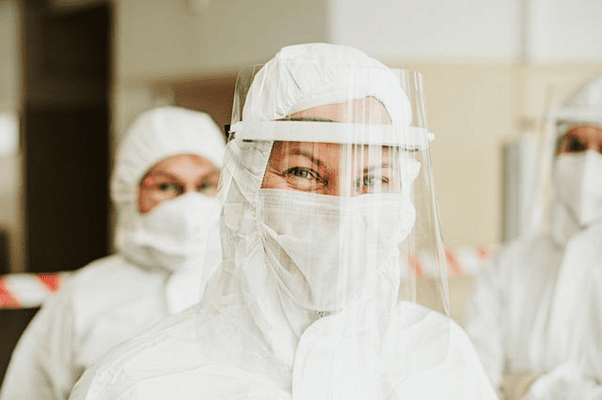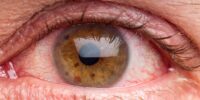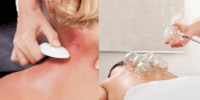How to Protect Your Eyes From Harmful Chemicals

The protection of one’s eyes from harmful chemicals is a matter of great importance. Understanding the risks associated with chemicals that pose a threat to ocular health is crucial in order to implement effective safety precautions.
This article aims to provide essential measures that individuals can take to safeguard their eyes, including the selection of appropriate eye protection gear and the adoption of proper handling techniques to minimize exposure.
Additionally, it will outline immediate steps to take in the event of a chemical eye injury and discuss strategies for creating a safe working environment to prevent chemical accidents.
Lastly, it will address when it is necessary to seek professional help from an eye specialist.
Key Takeaways
- Immediate and appropriate emergency response is crucial in minimizing the extent of a chemical eye injury, including flushing the affected eye with clean water for at least 15 minutes and seeking prompt medical attention.
- Eye protection gear, such as safety goggles or face shields, plays a crucial role in shielding the eyes from potential hazards and should be used in workplaces or environments with a risk of eye injuries.
- Access to emergency eye wash stations is essential for providing immediate relief and minimizing damage in the event of eye exposure to harmful substances.
- Proper equipment selection, regular maintenance, and safety training are important for ensuring adequate eye safety in environments with potential hazards related to chemical exposure.
Understanding the Risks: Chemicals That Pose a Threat to Your Eyes
Chemicals that pose a threat to ocular health need to be understood in order to effectively protect the eyes from their harmful effects. Chemical eye injuries can occur due to exposure to various substances, including acids, alkalis, solvents, and irritants. These chemicals can cause severe damage to the eyes, leading to pain, redness, blurred vision, and in some cases, permanent visual impairment.
Immediate and appropriate emergency response is crucial in minimizing the extent of injury and preventing long-term complications. In case of a chemical eye injury, it is important to flush the affected eye with clean water for at least 15 minutes, remove any contact lenses, and seek prompt medical attention.
Understanding the potential risks associated with specific chemicals and following appropriate emergency procedures can significantly reduce the impact of chemical eye injuries.
Safety Precautions: Essential Measures to Protect Your Eyes
This discussion will focus on three key points to ensure the safety of your eyes: eye protection gear, proper handling techniques, and emergency eye wash stations.
Eye protection gear, such as safety goggles or face shields, plays a crucial role in shielding the eyes from potential hazards.
Proper handling techniques, including using appropriate tools and following safety guidelines, can significantly reduce the risk of eye injuries.
Additionally, having access to emergency eye wash stations is essential for providing immediate relief and minimizing damage in the event of eye exposure to harmful substances.
Eye Protection Gear
Eye protection gear is essential for safeguarding the eyes from potential harm caused by exposure to hazardous substances. It is crucial to prioritize eye safety in workplaces or environments where there is a risk of eye injuries due to chemical exposure. There are various options available for eye protection, each offering different levels of protection. These options include safety glasses, goggles, and face shields. Safety glasses provide basic eye protection, while goggles offer a more secure seal around the eyes, protecting them from splashes and airborne particles. Face shields provide a wider coverage, safeguarding not only the eyes but also the face from chemical splashes and impacts. The importance of eye safety cannot be overstated, as it plays a vital role in preventing long-term damage and ensuring the well-being of individuals working in hazardous environments.
| Eye Protection Option | Level of Protection | Usage |
|---|---|---|
| Safety Glasses | Basic | General use, low-risk environments |
| Goggles | Intermediate | Chemical handling, high-risk environments |
| Face Shields | Advanced | Chemical splashes, flying debris, full-face protection |
Proper Handling Techniques
Proper handling techniques are crucial to minimize the risk of accidents and injuries in workplaces or environments where there is a potential for exposure to hazardous substances. To prevent accidents and ensure the safety of individuals, the following procedures should be followed:
- Use appropriate personal protective equipment (PPE) such as gloves, goggles, or respirators to reduce the risk of direct contact with hazardous substances.
- Store and handle chemicals in designated areas and containers to prevent spills or leaks.
- Follow proper disposal procedures for hazardous substances to avoid environmental contamination and potential harm to individuals.
Emergency Eye Wash Stations
Emergency eye wash stations are essential safety devices in workplaces or environments where individuals may be exposed to hazardous substances, providing immediate and effective means of rinsing the eyes to minimize potential damage or injury.
Proper equipment selection is crucial in ensuring that emergency eye wash stations are able to function optimally when needed. When choosing eye wash stations, it is important to consider factors such as the type of hazardous substances present, the size of the area, and the number of potential users.
The eye wash station should be able to deliver a steady and controlled flow of water to effectively flush out any foreign particles or chemicals that may have come into contact with the eyes. Additionally, the station should be easily accessible and clearly marked to ensure that it can be quickly located and utilized during an emergency situation.
Eye Protection Gear: Choosing the Right Equipment
This discussion will focus on the importance of essential eye protection and the factors to consider when selecting the appropriate equipment.
Eye protection is crucial in various industries and activities to prevent eye injuries and maintain visual health.
Proper equipment selection involves evaluating the specific hazards, considering industry standards, and ensuring a comfortable fit for optimal protection.
Essential Eye Protection
Eye protection is a crucial measure to safeguard the eyes from potential harm caused by exposure to hazardous chemicals. To prevent contamination and ensure eye safety, the following eye care tips should be followed:
- Wear appropriate eye protection: Safety goggles or face shields should be worn in situations where there is a risk of chemical splashes, flying debris, or other potential eye hazards.
- Maintain a clean working environment: Regularly clean work surfaces and ensure that chemicals are properly stored to prevent accidental spills or splashes.
- Practice good hygiene: Wash hands thoroughly before and after handling chemicals to avoid transferring contaminants to the eyes.
By following these eye care tips and using proper eye protection, individuals can minimize the risk of eye injuries and potential long-term damage caused by exposure to harmful chemicals.
It is essential to prioritize eye safety in any environment where hazardous chemicals are present.
Proper Equipment Selection
Proper equipment selection is a critical aspect of ensuring adequate eye safety when working in environments with potential hazards related to chemical exposure. It is essential to use appropriate eye protection equipment that is specifically designed to protect against chemical splashes and fumes.
The selection of equipment should be based on the nature of the chemicals used, their potential hazards, and the level of exposure anticipated. Safety goggles or full-face shields should be chosen based on the specific requirements of the task.
Regular equipment maintenance is necessary to ensure that the protective features of the equipment are functioning effectively. Safety training should also be provided to workers to ensure they understand the importance of proper equipment selection and maintenance, as well as how to use the equipment correctly to protect their eyes from harmful chemicals.
Proper Handling Techniques: Minimizing Exposure to Harmful Chemicals
To minimize exposure to harmful chemicals, it is essential to implement appropriate handling techniques. Minimizing chemical exposure is crucial in maintaining the health and safety of individuals who work with or around these substances. Safe handling practices should be followed to reduce the risk of accidents and health complications.
The following list highlights three important techniques for minimizing exposure to harmful chemicals:
- Proper storage: Chemicals should be stored in designated areas, away from incompatible substances. This helps prevent accidental mixing and reduces the risk of chemical reactions or spills.
- Personal protective equipment (PPE): Using appropriate PPE, such as gloves, goggles, and lab coats, provides a physical barrier between the chemicals and the skin, eyes, and clothing. This protects individuals from direct contact and potential harm.
- Ventilation: Adequate ventilation in work areas helps disperse harmful fumes and vapors, reducing the concentration of chemicals in the air. This improves air quality and minimizes the inhalation of toxic substances.
Implementing these safe handling practices is essential for minimizing chemical exposure and promoting a safe working environment.
First Aid for Chemical Eye Injuries: Immediate Steps to Take
Immediate response is crucial in dealing with chemical eye injuries and taking appropriate steps can help minimize the severity of the injury and prevent long-term complications.
When faced with a chemical eye injury, it is important to act quickly and effectively. The first step is to immediately flush the affected eye with clean water for at least 15 minutes. This helps to remove the chemical from the eye and dilute its concentration.
It is crucial to avoid rubbing the eye, as this can further irritate the affected area. After flushing, it is recommended to seek medical attention to assess the extent of the injury and receive appropriate treatment.
Prompt and proper first aid for chemical eye injuries can significantly reduce the risk of long-term damage and improve the chances of a full recovery.
Creating a Safe Working Environment: Preventing Chemical Accidents
Creating a safe working environment is essential for preventing chemical accidents and ensuring the well-being of individuals in the workplace. To achieve this, organizations need to focus on creating awareness and enforcing safety measures. Here are three key steps that can be taken to promote a safe working environment:
- Training and education: Providing comprehensive training programs on chemical safety and handling procedures can create awareness among employees about potential risks and the importance of following safety protocols.
- Regular inspections and maintenance: Conducting regular inspections of equipment, storage areas, and ventilation systems can help identify potential hazards and ensure that safety measures are being followed. Timely maintenance and repairs can also prevent accidents caused by malfunctioning equipment.
- Communication and reporting: Establishing clear communication channels and encouraging employees to report any safety concerns or near-miss incidents can help identify potential hazards and take proactive measures to prevent accidents.
Seeking Professional Help: When to Consult an Eye Specialist
Seeking professional help from an eye specialist is crucial when individuals experience symptoms such as blurred vision, eye irritation, or redness, which may indicate potential eye injuries caused by exposure to harmful chemicals in the workplace. Prompt treatment and care can prevent further damage to the eyes and ensure optimal eye health. Eye specialists are trained to diagnose and treat various eye conditions, including those caused by chemical exposure. They can conduct comprehensive eye examinations, provide appropriate medication or treatment, and offer valuable advice on eye care and protection. Additionally, they can identify any long-term effects of chemical exposure on the eyes and recommend necessary measures to maintain eye health. Regular check-ups with an eye specialist are essential for individuals working in environments where exposure to harmful chemicals is common.
| Symptoms | Potential Eye Injuries |
|---|---|
| Blurred vision | Corneal abrasion, chemical burns |
| Eye irritation | Conjunctivitis, dry eye syndrome |
| Redness | Uveitis, scleritis |
Frequently Asked Questions
Can Wearing Regular Eyeglasses Provide Enough Protection Against Harmful Chemicals?
Protective eyewear alternatives should be considered when working with harmful chemicals. Regular eyeglasses may not provide sufficient protection. The importance of proper safety protocols cannot be overstated in preventing eye injuries and minimizing potential risks.
How Do I Know if a Chemical Is Harmful to My Eyes?
Identifying harmful chemicals that can cause eye damage is crucial for maintaining eye health. Eye protection standards, such as safety goggles and face shields, are designed to shield the eyes from potential hazards posed by these chemicals.
Are There Any Home Remedies for Treating Chemical Eye Injuries?
Home remedies for chemical eye injuries and natural ways to treat such injuries have been explored. However, it is important to note that these remedies should not replace professional medical advice and immediate treatment from a healthcare provider.
Is It Possible to Fully Prevent Chemical Accidents in a Working Environment?
It is important to consider safety measures when working with chemicals to prevent accidents. While it may not be possible to fully prevent chemical accidents, implementing safety protocols and providing appropriate protective equipment can significantly reduce the risk.
When Should I Seek Professional Help for a Chemical Eye Injury?
Seeking professional help for a chemical eye injury is crucial for immediate response and appropriate treatment. Prompt medical attention ensures proper evaluation and management, minimizing the risk of long-term damage and optimizing visual outcomes.








